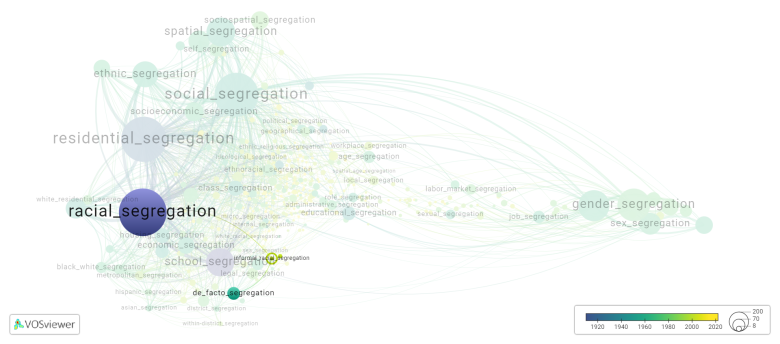Informal racial segregation
Date and country of first publication[1]
2009
South Africa
Definition
Informal racial segregation refers to the separation or division of individuals from different racial or ethnic backgrounds that occurs without being explicitly enforced or mandated by law. It might manifest through social, economic, or cultural factors that lead to segregated communities or spaces.
Examples of informal racial segregation can include:
1. Residential segregation: People of different races or ethnicities living in separate neighborhoods or areas within a city or town. This can happen due to historical patterns, economic disparities, or self-selection based on racial preferences.
2. School segregation: Despite legal interventions to desegregate schools, informal segregation can still persist through various means. This may include parents choosing to send their children to schools within their racial or ethnic group, disparities in school funding, or the concentration of certain racial or ethnic groups in specific school districts.
3. Racialized social networks: People tend to form social connections and friendships within their own racial or ethnic group, resulting in racially homogeneous social networks. This can limit opportunities for diverse interactions and perpetuate informal segregation.
4. Workplace segregation: Certain professions or industries may have informal barriers that result in racial segregation. This can be due to discriminatory hiring practices, lack of diversity initiatives, or biases within the workplace culture.
Informal racial segregation can have significant impacts on marginalized communities, perpetuating economic and educational inequalities and limiting opportunities for social integration and diversity. It is an issue that requires continual efforts to address and dismantle systemic barriers and promote inclusivity.
See also
Related segregation forms
Informal racial segregation is frequently discussed in the literature with the following segregation forms:
racial segregation, de facto segregation, institutionalized racial segregation

This visualization is based on the study The Multidisciplinary Landscape of Segregation Research.
For the complete network of interrelated segregation forms, please refer to:
References
Notes
- ↑ Date and country of first publication as informed by the Scopus database (December 2023).
Informal racial segregation appears in the following literature
Battersby-Lennard J. (2009). Apartheid/Post Apartheid. International Encyclopedia of Human Geography, 167-173. Elsevier Inc..https://doi.org/10.1016/B978-008044910-4.00920-2
Bates S. (2017). Before the storm: Hurricane katrina, the BP oil spill, and the challenges to racial hierarchies in rural louisiana. Nature and Culture, 12(1), 65-85. Berghahn Journals.https://doi.org/10.3167/nc.2017.120105
Battersby J. (2019). Apartheid/Postapartheid. International Encyclopedia of Human Geography, Second Edition, 169-175. Elsevier.https://doi.org/10.1016/B978-0-08-102295-5.10159-3
Novak A. (2021). Rhodesia and FIFA: racial discrimination, political legitimacy and football, 1960 to 1980. Soccer and Society, 22(3), 266-279. Routledge.https://doi.org/10.1080/14660970.2020.1814752
